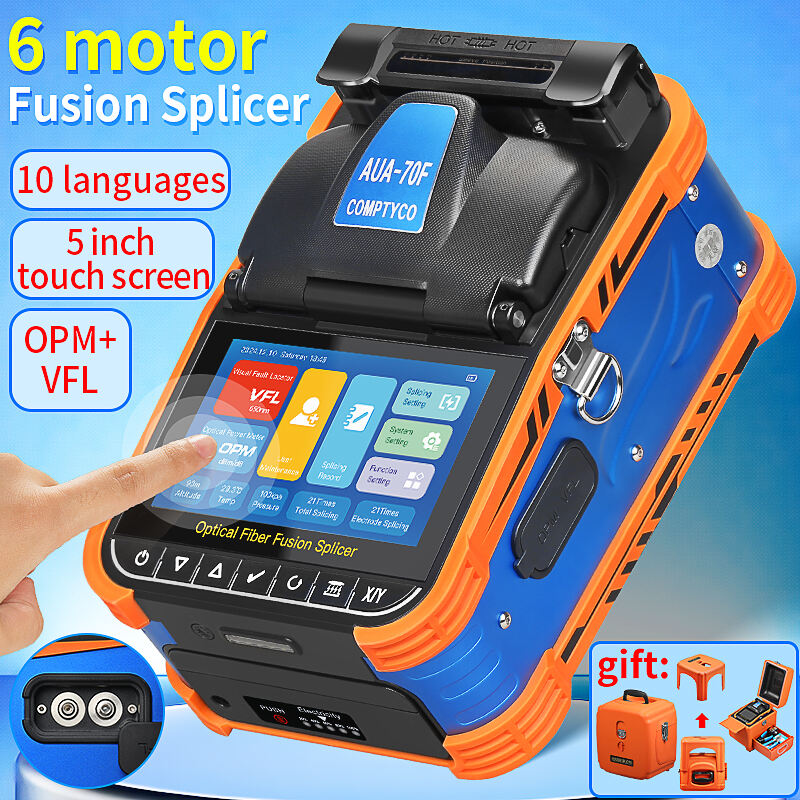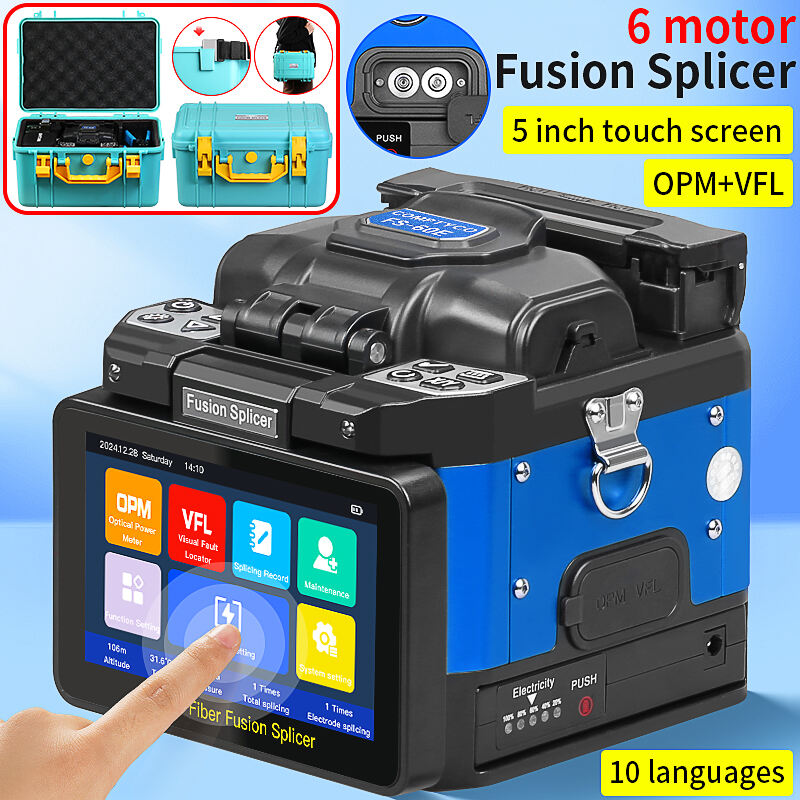fiber optic fusion splicer
A fiber optic fusion splicer is a precision instrument designed to permanently join optical fibers through a process of heat fusion. This sophisticated device uses precisely controlled electric arc to melt the fiber ends and fuse them together, creating a seamless connection with minimal signal loss. The modern fusion splicer incorporates advanced imaging systems with multiple cameras that provide detailed views of the fiber alignment from different angles, ensuring optimal positioning before fusion. These devices typically feature automatic alignment capabilities, utilizing core detection technology to achieve the most accurate fiber alignment possible. The splicer's heating element generates temperatures reaching several thousand degrees Celsius, necessary for proper fiber fusion. Many contemporary models include built-in testing capabilities that can immediately verify the quality of the splice through estimated loss measurements. The device also features protective coating mechanisms and fiber holders that maintain fiber stability during the splicing process. These instruments are essential in telecommunications infrastructure, data centers, and fiber-to-the-home installations, where high-quality fiber connections are crucial for maintaining network integrity and performance. Advanced models often include environmental compensation systems that adjust splicing parameters based on altitude, temperature, and humidity conditions, ensuring consistent results across various working environments.


